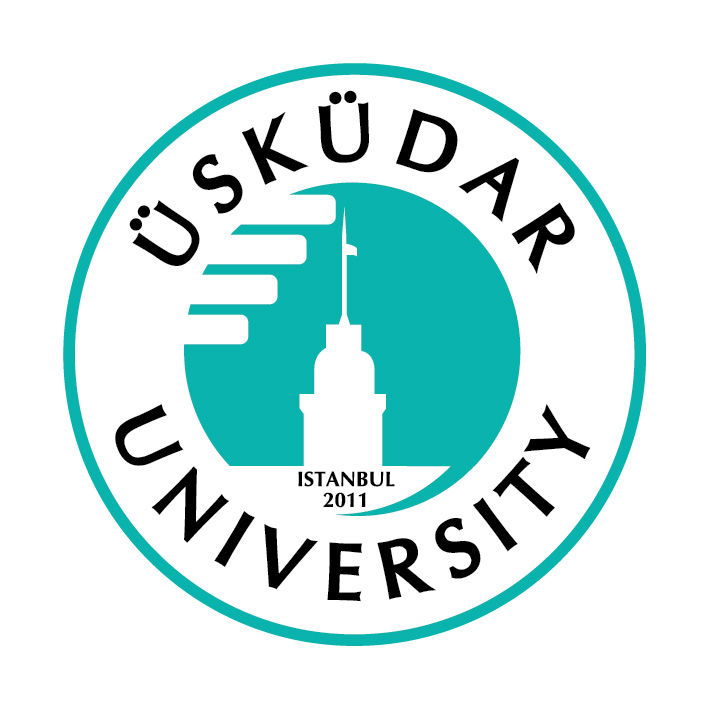预约演示
更新于:2025-05-07
Acute respiratory infections
急性呼吸道感染
更新于:2025-05-07
基本信息
别名 ACUTE RESPIRATORY INFECTIONS、ARI - Acute respiratory infections、Acute respiratory infection + [6] |
简介- |
关联
14
项与 急性呼吸道感染 相关的药物靶点- |
作用机制 免疫刺激剂 |
非在研适应症- |
最高研发阶段批准上市 |
首次获批国家/地区 俄罗斯 |
首次获批日期2018-09-01 |
靶点- |
作用机制 细胞凋亡抑制剂 [+3] |
最高研发阶段批准上市 |
首次获批国家/地区 俄罗斯 |
首次获批日期2009-01-01 |
239
项与 急性呼吸道感染 相关的临床试验NCT06780566
Routine Application of Point-of-care PCR Test to Identify and Direct Therapy for Acute Respiratory Infection in the Emergency Department (RAPID-ARIED) Trial
The RAPID-ARIED Trial is a pragmatic, single-centre, parallel group, open-label, randomised controlled trial to be conducted in the Accident and Emergency Department of Queen Mary Hospital in Hong Kong. The investigators aim to 1) to evaluate the clinical impact of the routine application of point-of-care polymerase chain reaction (PCR) testing for targeted respiratory pathogens in the emergency department (ED) for adult patients with acute respiratory infections (ARIs) on the hospital length of stay (LOS), antiviral and antibiotic use during influenza seasons or future waves of COVID-19; and 2) to conduct a health economic analysis of such a strategy.
The investigators hypothesise that in adult patients hospitalised from the ED for ARIs during influenza seasons or COVID-19 waves, routine point-of-care PCR test for influenza A&B, SARS-CoV-2 and respiratory syncytial virus in the ED reduces the hospital LOS significantly and cost effectively compared to usual care.
In total, 1,050 adult patients who are intended to be admitted to hospital with ARIs in the ED will be recruited during influenza seasons or future waves of COVID-19 over 36 months from 2025 to 2027.
Participants will be randomised (1:1 ratio) into the interventional group and control group. A nasal swab will be collected. In the intervention group, research staff will perform PCR test using the GeneXpert® Xpress PCR kit in the ED and communicate the test results to the patient and the clinical team. In the control group, all microbiology tests will be determined by the clinical team, with retrospective PCR testing of the nasal swab sample after 28 days.
The primary outcome is the median hospital LOS. Secondary outcomes include antivirals and antibiotics use and administration time, mortality, and quality-adjusted life year, assessed using the EQ-5D-5L questionnaire.
Intention-to-treat analysis (superiority framework) and cost-effectiveness analysis (from healthcare provider perspective) will be conducted.
Study results will provide evidence regarding the optimal PCR testing strategy in the future influenza seasons and COVID-19 waves.
The investigators hypothesise that in adult patients hospitalised from the ED for ARIs during influenza seasons or COVID-19 waves, routine point-of-care PCR test for influenza A&B, SARS-CoV-2 and respiratory syncytial virus in the ED reduces the hospital LOS significantly and cost effectively compared to usual care.
In total, 1,050 adult patients who are intended to be admitted to hospital with ARIs in the ED will be recruited during influenza seasons or future waves of COVID-19 over 36 months from 2025 to 2027.
Participants will be randomised (1:1 ratio) into the interventional group and control group. A nasal swab will be collected. In the intervention group, research staff will perform PCR test using the GeneXpert® Xpress PCR kit in the ED and communicate the test results to the patient and the clinical team. In the control group, all microbiology tests will be determined by the clinical team, with retrospective PCR testing of the nasal swab sample after 28 days.
The primary outcome is the median hospital LOS. Secondary outcomes include antivirals and antibiotics use and administration time, mortality, and quality-adjusted life year, assessed using the EQ-5D-5L questionnaire.
Intention-to-treat analysis (superiority framework) and cost-effectiveness analysis (from healthcare provider perspective) will be conducted.
Study results will provide evidence regarding the optimal PCR testing strategy in the future influenza seasons and COVID-19 waves.
开始日期2025-04-30 |
申办/合作机构 |
NCT06893237
The Effect of Virtual Reality Goggles and Distraction Cards Applied to Children Aged 6-12 Years During Inhaler Therapy on Physiological Parameters and Anxiety: a Randomised Controlled Study
In the literature, studies examining the effect of virtual reality application on physiological parameters and anxiety during inhalation therapy, which is frequently used in children, are quite limited. Therefore, this study will be conducted to determine the effect of virtual reality goggles and distraction cards on physiological parameters and anxiety in patients receiving inhalation therapy.
开始日期2025-04-01 |
申办/合作机构 |
NCT06885229
Reuseable Face Masks to Reduce Risk of Viral Respiratory Infections and Exacerbations in Adults With Asthma: a Randomised Controlled Trial
REMASK trial is a Trial within Cohort study (TwiCs), nested within the COVIDENCE UK longitudinal study. It has been designed to determine whether the offer of a free reusable, elastomeric face mask to adults with asthma and other members of their household reduces risk of RT-PCR confirmed viral respiratory infections and asthma exacerbations.
开始日期2025-04-01 |
100 项与 急性呼吸道感染 相关的临床结果
登录后查看更多信息
100 项与 急性呼吸道感染 相关的转化医学
登录后查看更多信息
0 项与 急性呼吸道感染 相关的专利(医药)
登录后查看更多信息
8,489
项与 急性呼吸道感染 相关的文献(医药)2025-12-31·Emerging Microbes & Infections
The seroprevalence of adenoviruses since 2000
1
Review
作者: Li, Jiashun ; Li, Yuhua ; Zhao, Shutao ; Yu, Changfa ; Feng, Ying ; Chen, Ling ; Hong, Lingling ; Zeng, Weikai
2025-12-31·Human Vaccines & Immunotherapeutics
Demographics and clinical burden of disease among RSV-hospitalized older adults in Italy: A retrospective cohort study
Article
作者: Calabrò, Giovanna Elisa ; Domnich, Alexander ; Marijam, Alen ; Veronesi, Chiara ; Dovizio, Melania ; Degli Esposti, Luca ; Rizzo, Caterina ; Vicentini, Marta ; Puggina, Anna ; Fonseca, Maria João
2025-12-31·Annals of Medicine
Clinical and epidemiological characteristics of respiratory syncytial virus, SARS-CoV-2 and influenza paediatric viral respiratory infections in southwest Saudi Arabia
Article
作者: Alyazidi, Noha Saad ; Alrmelawi, Ali A. ; Al-Jarie, Ahmed ; Alzaydani, Ibrahim A. ; Alsulayyim, Rahaf S. ; Al-Qahtani, Saleh M. ; Alqahtani, Alya Musfer ; Abdullah, Dhay M. ; Asseri, Ali Alsuheel ; Ali, Abdelwahid S. ; Alzailaie, Ameerah K.
233
项与 急性呼吸道感染 相关的新闻(医药)2025-04-29
·硕世生物
据中国疾病预防控制中心最新发布的全国急性呼吸道传染病哨点监测情况(2025年第13周),哨点医院门急诊流感样病例呼吸道样本检测阳性病原体主要为鼻病毒、新型冠状病毒和人偏肺病毒;住院严重急性呼吸道感染病例呼吸道样本检测阳性病原体主要为呼吸道合胞病毒、鼻病毒和人偏肺病毒。其中呼吸道合胞病毒检测阳性率较前期回升明显,且在0-4岁婴幼儿及住院严重急性呼吸道感染病例中位于首位。图2 哨点医院住院严重急性呼吸道感染病例呼吸道样本病原体核酸检测阳性率每周变化趋势钟南山院士近日在电视媒体节目《名医说》中也提醒婴幼儿时期呼吸道合胞病毒感染容易引起喘息、气道狭窄等变化,长大后长期存在,严重时还可导致肺炎、呼吸衰竭、脑炎等疾病甚至死亡,值得我们特别关注!何为呼吸道合胞病毒RSV?呼吸道合胞病毒(Respiratory Syncytial Virus,RSV)是全世界范围引起5岁以下儿童急性下呼吸道感染最重要的病毒病原,给家庭和公共医疗体系带来了巨大的疾病负担。婴幼儿、老年人和免疫功能低下者为易感人群。高度传染性,RSV流行受到不同地域和气候的影响,寒温带地区主要在冬春季流行;热带和亚热带地区,潮湿雨季感染率明显增高。主要通过飞沫传播(咳嗽、打喷嚏)或接触被污染的物体表面传播。潜伏期2-8天,传染期可持续3-8天(免疫力低下者更久)。RSV典型症状及区别其他常见病原1成人/儿童:类似感冒,如鼻塞、咳嗽、低烧,通常1-2周自愈。2婴幼儿(尤其<1岁):易发展为下呼吸道感染,表现为呼吸急促、喘息、三凹征(肋骨间凹陷),严重时引发肺炎或呼吸衰竭,需及时就医。3高风险群体:早产儿、先天性心脏病或免疫缺陷儿童可能症状更重。图源:央视财经中国好医生如何科学防范RSV1日常防护:勤洗手(尤其接触公共物品后),戴口罩,避免用手摸口鼻眼。2减少接触:避免带婴幼儿去人群密集处,感染者应居家隔离。3环境消毒:定期清洁门把手、玩具等高频接触物,保持通风。4特殊保护:高风险婴儿可咨询医生注射单克隆抗体(如帕利珠单抗)。RSV临床诊断及实验室检测实验室检测是RSV感染的确诊依据。《中国儿童呼吸道合胞病毒感染诊疗及预防指南(2024医生版)》推荐核酸检测适用于各级医院门诊和急诊,有核酸检测条件的医院可以直接进行核酸检测,快速RSV抗原检测适用于各级医院的门诊和急诊急性呼吸道感染患儿RSV感染的诊断。硕世呼吸道合胞病毒RSV检测解决方案包含呼吸道合胞病毒A型和B型核酸检测试剂盒(荧光PCR法)及呼吸道合胞病毒抗原检测试剂盒(胶体金法)*两款试剂。其中RSV核酸检测可实现精准A/B分型,有效避免检测窗口期,为临床0-4岁高危儿童及门诊、危重住院患者提供快速确诊检测,保障更高灵敏度,为危重住院患者提供分区诊疗诊断依据;呼吸道合胞病毒抗原检测试剂盒(胶体金法)*,可实现门急诊抗原快速检测,阳性结果可做感染诊断,10-15min出结果,可搭载硕世荧光免疫分析仪SIC-1000实现抗原自动化检测。硕世生物多年来致力于通过多检测平台,精准呼吸道病原检测解决方案,助力春、冬季流行呼吸道感染快速检测!
诊断试剂临床研究
2025-04-07
CAMBRIDGE, MA / ACCESS Newswire / April 7, 2025 / Moderna, Inc. (NASDAQ:MRNA) today announced that the Company will present research across multiple infectious disease areas, including COVID-19, influenza, respiratory syncytial virus (RSV), cytomegalovirus (CMV), norovirus, and mpox, at the European Society of Clinical Microbiology and Infectious Diseases (ESCMID) Global Congress in Vienna, Austria, from April 11-15, 2025.
Moderna will present twelve scientific presentations at the ESCMID 2025 Global Congress, including three oral presentations, one e-poster presentation, and eight poster presentations, highlighting the breadth of its research in respiratory and emerging infectious diseases.
COVID-19
Immunogenicity of JN.1- and KP.2-encoding mRNA COVID-19 vaccines against JN.1 SARS-CoV-2 sublineages in adult participants - Oral Presentation Presenter: Frances Priddy Session: Advances in vaccine effectiveness for viral respiratory infections Date: April 12 | Time & Location: 11:00 (Hall 9) Relative vaccine efficacy of a SARS-CoV-2 spike receptor-binding and N-terminal domain COVID-19 vaccine versus mRNA-1273: subgroup analyses - Oral Presentation Presenter: Spyros Chalkias Session: Vaccines and prophylaxis against respiratory viral infections Date: April 13 | Time & Location: 11:00 (Hall 9) Clinical evaluation of a SARS-CoV-2 spike receptor-binding and N-terminal domain COVID-19 vaccine - Poster Presentation Presenter: Spyros Chalkias Session: COVID-19 Date: April 12 | Time & Location: 12:00 (Poster Hall) Immunogenicity and safety of a SARS-CoV-2 N-terminal domain and receptor-binding domain monovalent XBB.1.5 vaccine in Japanese participants aged ≥12 years - Poster Presentation Presenter: Christina Grassi Session: COVID-19 Date: April 12 | Time & Location: 12:00 (Poster Hall)
Immunogenicity of JN.1- and KP.2-encoding mRNA COVID-19 vaccines against JN.1 SARS-CoV-2 sublineages in adult participants - Oral Presentation Presenter: Frances Priddy Session: Advances in vaccine effectiveness for viral respiratory infections Date: April 12 | Time & Location: 11:00 (Hall 9)
Relative vaccine efficacy of a SARS-CoV-2 spike receptor-binding and N-terminal domain COVID-19 vaccine versus mRNA-1273: subgroup analyses - Oral Presentation Presenter: Spyros Chalkias Session: Vaccines and prophylaxis against respiratory viral infections Date: April 13 | Time & Location: 11:00 (Hall 9)
Clinical evaluation of a SARS-CoV-2 spike receptor-binding and N-terminal domain COVID-19 vaccine - Poster Presentation Presenter: Spyros Chalkias Session: COVID-19 Date: April 12 | Time & Location: 12:00 (Poster Hall)
Immunogenicity and safety of a SARS-CoV-2 N-terminal domain and receptor-binding domain monovalent XBB.1.5 vaccine in Japanese participants aged ≥12 years - Poster Presentation Presenter: Christina Grassi Session: COVID-19 Date: April 12 | Time & Location: 12:00 (Poster Hall)
RSV
Six-month Immunogenicity of mRNA-1345 RSV Vaccine in Adults Aged ≥60 Years - E-Poster Presentation Presenter: Mihir Desai Session: On the frontiers of vaccine-driven prevention Date: April 12 | Time & Location: 08:30 (Arena 1) Safety and immunogenicity of mRNA-1345 revaccination at 24 months in adults ≥60 years - Poster Presentation Presenter: Mihir Desai Session: Clinical Trials Date: April 15 | Time & Location: 12:00 (Poster Hall) Burden of chronic medical conditions that are risk factors for severe RSV among adults aged 18-59 years in the United States - Poster Presentation Presenter: Clarisse Demont Session: Influenza and respiratory viruses Date: April 12 | Time & Location: 12:00 (Poster Hall) Association of virology swab positivity in adults aged ≥40 years with Computerized Medical Record Reported Acute Respiratory Infection (ARI) Subgroups: Observational Study of ARI (ObservatARI) - Poster Presentation Presenter: Simon De Lusignan Session: Influenza and respiratory viruses Date: April 12 | Time & Location: 12:00 (Poster Hall)
Six-month Immunogenicity of mRNA-1345 RSV Vaccine in Adults Aged ≥60 Years - E-Poster Presentation Presenter: Mihir Desai Session: On the frontiers of vaccine-driven prevention Date: April 12 | Time & Location: 08:30 (Arena 1)
Safety and immunogenicity of mRNA-1345 revaccination at 24 months in adults ≥60 years - Poster Presentation Presenter: Mihir Desai Session: Clinical Trials Date: April 15 | Time & Location: 12:00 (Poster Hall)
Burden of chronic medical conditions that are risk factors for severe RSV among adults aged 18-59 years in the United States - Poster Presentation Presenter: Clarisse Demont Session: Influenza and respiratory viruses Date: April 12 | Time & Location: 12:00 (Poster Hall)
Association of virology swab positivity in adults aged ≥40 years with Computerized Medical Record Reported Acute Respiratory Infection (ARI) Subgroups: Observational Study of ARI (ObservatARI) - Poster Presentation Presenter: Simon De Lusignan Session: Influenza and respiratory viruses Date: April 12 | Time & Location: 12:00 (Poster Hall)
Mpox
Safety and immunogenicity of mRNA mpox vaccine candidate mRNA-1769: Interim analysis results from a Phase 1/2 Trial - Oral Presentation Presenter: Hiwot Hiruy Session: Novel vaccines in clinical development Date: April 14 | Time & Location: 17:30 (Hall 3)
Safety and immunogenicity of mRNA mpox vaccine candidate mRNA-1769: Interim analysis results from a Phase 1/2 Trial - Oral Presentation Presenter: Hiwot Hiruy Session: Novel vaccines in clinical development Date: April 14 | Time & Location: 17:30 (Hall 3)
Cytomegalovirus
Long-term safety and immunogenicity of cytomegalovirus mRNA-1647 vaccine in healthy adults: 36-month results from a phase 2 extension trial - Poster Presentation Presenter: Ben Lorenz Session: Clinical Trials Date: April 15 | Time & Location: 12:00 (Poster Hall)
Long-term safety and immunogenicity of cytomegalovirus mRNA-1647 vaccine in healthy adults: 36-month results from a phase 2 extension trial - Poster Presentation Presenter: Ben Lorenz Session: Clinical Trials Date: April 15 | Time & Location: 12:00 (Poster Hall)
Influenza
Six-month persistence and safety of mRNA-based influenza or multicomponent influenza/COVID-19 vaccines versus licensed comparators in adults aged ≥18 years - Poster Presentation Presenter: Mieke Soens Session: Influenza and respiratory viruses Date: April 12 | Time & Location: 12:00 (Poster Hall)
Six-month persistence and safety of mRNA-based influenza or multicomponent influenza/COVID-19 vaccines versus licensed comparators in adults aged ≥18 years - Poster Presentation Presenter: Mieke Soens Session: Influenza and respiratory viruses Date: April 12 | Time & Location: 12:00 (Poster Hall)
Norovirus
Incidence and severity of sporadic, medically attended norovirus infection in the United States, 2023-2024 - Poster Presentation Presenter: Mark A. Schmidt Session: Viral epidemiology - general, prevalence studies, molecular and genomic epidemiology Date: April 12 | Time & Location: 12:00 (Poster Hall)
Incidence and severity of sporadic, medically attended norovirus infection in the United States, 2023-2024 - Poster Presentation Presenter: Mark A. Schmidt Session: Viral epidemiology - general, prevalence studies, molecular and genomic epidemiology Date: April 12 | Time & Location: 12:00 (Poster Hall)
About Moderna
Moderna is a leader in the creation of the field of mRNA medicine. Through the advancement of mRNA technology, Moderna is reimagining how medicines are made and transforming how we treat and prevent disease for everyone. By working at the intersection of science, technology and health for more than a decade, the company has developed medicines at unprecedented speed and efficiency, including one of the earliest and most effective COVID-19 vaccines.
Moderna's mRNA platform has enabled the development of therapeutics and vaccines for infectious diseases, immuno-oncology, rare diseases and autoimmune diseases. With a unique culture and a global team driven by the Moderna values and mindsets to responsibly change the future of human health, Moderna strives to deliver the greatest possible impact to people through mRNA medicines. For more information about Moderna, please visit modernatx.com and connect with us on X (formerly Twitter), Facebook, Instagram, YouTube and LinkedIn.
Forward-Looking Statements
This press release contains forward-looking statements within the meaning of the Private Securities Litigation Reform Act of 1995, as amended, including statements regarding: the potential for Moderna's vaccine candidates to alleviate disease outcomes. The forward-looking statements in this press release are neither promises nor guarantees, and you should not place undue reliance on these forward-looking statements because they involve known and unknown risks, uncertainties, and other factors, many of which are beyond Moderna's control and which could cause actual results to differ materially from those expressed or implied by these forward-looking statements. These risks, uncertainties, and other factors include, among others, those risks and uncertainties described under the heading "Risk Factors" in Moderna's Annual Report on Form 10-K for the fiscal year ended December 31, 2024, and in subsequent filings made by Moderna with the U.S. Securities and Exchange Commission, which are available on the SEC's website at www.sec.gov. Except as required by law, Moderna disclaims any intention or responsibility for updating or revising any forward-looking statements contained in this press release in the event of new information, future developments or otherwise. These forward-looking statements are based on Moderna's current expectations and speak only as of the date of this press release.
Moderna Contacts
Media: Luke Mircea-Willats Senior Director, International Communications Luke.Mirceawillats@modernatx.com
Investors: Lavina Talukdar Senior Vice President & Head of Investor Relations +1 617-209-5834 Lavina.Talukdar@modernatx.com
SOURCE: Moderna Inc.
疫苗临床结果临床2期信使RNA
2025-04-02
·梅斯医学
据俄新社当地时间3月30日报道,俄罗斯疑似出现了一种未知病毒,患者感染症状包括咳嗽带血和体温高达39℃。俄新社引用“电报”(Telegram)频道SHOT的消息报道称,感染者初期仅表现为疲劳和肌肉疼痛,但病情在数日内急转直下。患者体温迅速升至39℃以上,伴随寒战和剧烈咳嗽,痰中带血丝甚至大量咯血。值得注意的是,所有患者的新冠病毒、甲型/乙型流感检测均为阴性,且抗生素治疗效果有限。有患者表示,即使在经过几天的治疗后,咳嗽症状依然存在,而新冠病毒和普通感冒的检测仍然是阴性。3月31日,俄罗斯“消费者权益保护和公益监督局”(Rospotrebnadzor)对外发表声明称:“俄罗斯联邦在定期的流行病学监测和基因组疫情监测过程中,未发现新病毒或发生重大变异的病毒。包括新冠病毒、流感以及非感染性肺炎在内的呼吸道传染病的发病率正在下降,并且情况稳定且完全可控。”该机构是俄罗斯政府负责公共卫生事务的主要机构包括之一。官员称,病毒传言起源于“电报”SHOT频道,随后被多个地方媒体放大。俄罗斯教育科学院副院长、俄罗斯科学院院士根纳季・奥尼先科提醒,对该病毒的有关信息还需进一步研究和全面调查,因为这些症状既有可能是个体的特殊情况所致,也有可能是其他疾病的并发症,暂时不要大肆炒作,以免引发不必要的恐慌。31日晚间,之前报道未知病毒的俄罗斯媒体 SHOT 更新说:“俄罗斯近期出现的伴有咳血、高烧和剧烈咳嗽的患者,在医生进行额外检查并研究了疾病症状后,被确诊为支原体肺炎,值得注意的是,流感和covid检测结果均为阴性。”据一名康复者介绍,医生对其进行进一步检查后才作出相关诊断。患者新冠病毒和流感检测结果均为阴性,印证了此前关于非典型细菌感染的初步判断。关于肺炎支原体肺炎 (MPP)肺炎支原体是一种介于细菌与病毒大小之间的非典型病原体,是急性呼吸道感染的主要原因之一。其传染源主要是患者和无症状感染者,通过飞沫传播。潜伏期通常为1-3周,但在此期间及之后数周内,感染者都具有传染性。大多数情况下,感染肺炎支原体的患者临床症状较轻,表现为头痛、咽痛、发热、咳嗽等呼吸道症状,有时甚至无症状。然而,10%-40%的感染者可能会发展为肺炎支原体肺炎 (MPP)。MPP临床大多起病不急,临床症状轻重不一,一般临床症状较轻,甚至无症状,但也有个别重症甚至死亡报道。肺炎支原体感染后可仅仅表现为呼吸道症状,但也可出现肺外症状。肺炎支原体肺炎一般属于间质性肺炎,因此临床体征往往轻于影像学检查结果,而且临床症状消失后,肺部影像学检查还可能有炎症表现。由于肺炎支原体没有细胞壁,大家所熟悉的青霉素和头孢,这类抗生素都是以细胞壁作为靶点,因此对肺炎支原体完全无效。大环内酯类抗菌药物,如罗红霉素、阿奇霉素,目前为肺炎支原体感染的首选治疗药物。目前尚无预防肺炎支原体感染的疫苗,做好预防至关重要:1. 支原体肺炎患者潜伏期内至症状缓解数周均有传染性仍有传染性,应避免接触免疫力低下人群及婴幼儿,并对患者所使用物品应进行消毒处理。2. 高发季节避免逗留于人口密集区进行预防,人口密集区佩戴防护口罩。3. 养成良好卫生习惯:注意手卫生,勤洗手,勤通风。流行高发季节,注意室内通风。4. 感染后虽然可以长期有 IgG 抗体,但是免疫力不会长期存在,需提高免疫力:适当运动,避免熬夜,减少吸烟及被动吸烟。撰文 | 梅斯头条编辑 | 木白● 震撼!自媒体大咖怒批:去北京看病,来回花了上千,不到3分钟给我打发了!网友:去医院不如花100元线上问诊,半天限号30个可行吗?● 热议!患者去体检,半年后去世,家属竟要求体检中心赔偿百万!省高检:有过错!医生困惑:不确定疾病,建议专科治疗,为啥还有错?● 震惊!住院医比主任还重要?主任空缺,科室依旧运行,小医生离职,科室天都塌了!医生难休假、难找工作,根源在于“一个萝卜一个坑”版权说明:梅斯医学(MedSci)是国内领先的医学科研与学术服务平台,致力于医疗质量的改进,为临床实践提供智慧、精准的决策支持,让医生与患者受益。欢迎个人转发至朋友圈,谢绝媒体或机构未经授权以任何形式转载至其他平台。点击下方「阅读原文」 立刻下载梅斯医学APP!
分析
对领域进行一次全面的分析。
登录
或

Eureka LS:
全新生物医药AI Agent 覆盖科研全链路,让突破性发现快人一步
立即开始免费试用!
智慧芽新药情报库是智慧芽专为生命科学人士构建的基于AI的创新药情报平台,助您全方位提升您的研发与决策效率。
立即开始数据试用!
智慧芽新药库数据也通过智慧芽数据服务平台,以API或者数据包形式对外开放,助您更加充分利用智慧芽新药情报信息。
生物序列数据库
生物药研发创新
免费使用
化学结构数据库
小分子化药研发创新
免费使用




